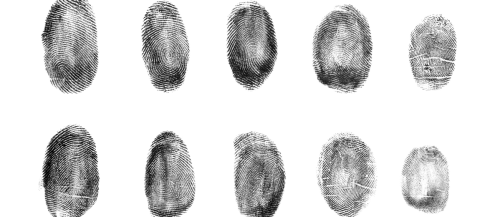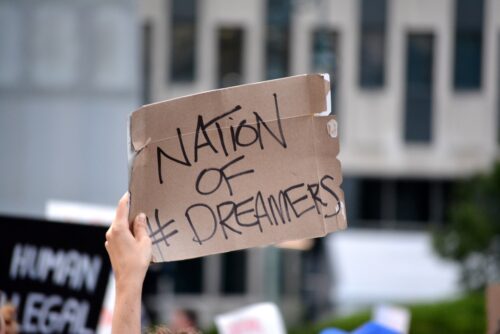Diversity is a core American value, and in 1990, the Diversity Immigrant Visa Program (diversity visa program) was established to encourage immigration to the United States from a broader variety of countries. By creating more diversity in our immigration pool, the program helps balance the current U.S. immigration system’s tendency to favor individuals who have close relationships with family members or employers in the United States. People who do not have U.S.-based eligible family members or employers able to sponsor their visas have very few opportunities for permanent, legal immigration to the United States—even if they have other promising attributes that could benefit the country.
This fact sheet provides an overview of the diversity visa program, the requirements and security checks currently in place, and demographic information about recipients.
What Is a Diversity Visa?
Congress established the diversity visa program through the Immigration Act of 1990 in an effort to promote immigration from countries underrepresented in the United States. The number of diversity visas is limited by law to 55,000 per fiscal year, but the annual cap has been reduced to 50,000 since fiscal year 2000. While Congress called this cap a “temporary reduction,” it does not have an expiration date. As of 2017, the U.S. government states that this reduction will remain in effect as long as needed, including for 2019.
The diversity visa program makes up to 50,000 visas available each year to natives of eligible countries. The program is well known as the “diversity lottery,” since potential visa recipients are randomly selected from the pool of qualified entries. Yet, being randomly selected—or “winning” the lottery—does not guarantee admission to the United States but rather provides the individual an opportunity to apply for the Diversity Visa. The odds of being selected for this opportunity are very small, with an average of 13.3 million people submitting applications each year.
Who Is Eligible for a Diversity Visa?
Only nationals of low-admission countries—defined as any country with fewer than 50,000 natives admitted to the United States in the previous five years—are eligible to enter the diversity lottery. Natives of countries that traditionally send large numbers of immigrants to the United States, such as Mexico, India, and China, are generally not eligible.
Eligible countries are grouped into six geographic regions: Europe; Africa; Asia; Oceania; North America (excluding Mexico); and South America, Mexico, Central America, and the Caribbean. U.S. Citizenship and Immigration Services (USCIS) calculates each region’s annual diversity visa allotment using a specific formula and recent immigration statistics. The allocation formula, which is recalculated every year, gives fewer visas to “high-admission” regions, or any region that accounted for more than a sixth of all immigrant admissions to the United States in the previous five years. Additionally, no more than 7 percent of the year’s available visas may go to natives of any one country.
To be eligible for a diversity visa, applicants must be admissible to the United States under the Immigration and Nationality Act (INA) and have either a high-school education (or its equivalent) or at least two years of recent qualifying work experience. The applicant or the applicant’s spouse must be a native of one of the countries that qualify for the diversity visa program.
The diversity visa program only accepts applications submitted electronically within a short timeframe designated each year. Eligible applicants are limited to one entry per registration period and will be disqualified for submitting multiple entries.
What Security Measures Are in Place for the Diversity Visa Program?
Diversity lottery “winners” have a short period of time to file the necessary paperwork and undergo extensive screening before a visa will be issued, including multiple identity confirmations using biometrics, criminal and security background checks, cross-checks with various watch-lists, and in-person interviews. These requirements and security procedures also apply for any family members (spouses and minor children) whom the lottery winner petitions to bring to the United States as derivatives.
An individual may be issued a visa and admitted into the United States only after passing all electronic and in-person screenings. If visa processing for a lottery winner or an eligible family member is not completed before the end of the fiscal year, the U.S. government will deny the application, and the person loses the opportunity to immigrate to the United States through that year’s diversity visa program. While the individual may be eligible to enter the diversity lottery in future years, the chances of again being randomly selected to apply for the visa are slim.
Who Has Received a Diversity Visa?
Each year, diversity visa recipients make up between 4 and 5 percent of all individuals granted Lawful Permanent Resident (LPR) status, or a “green card.” In 2015, the year with the most recent available data, there were 47,934 green cards issued to diversity visa recipients and their families. Of those, 25,108 were principal applicants, 11,051 were spouses of principal applicants, and 11,775 were their children. Overall, just over half of diversity visa recipients in 2015 were male, and three-quarters (75 percent) were 20 years of age and older.
The educational and skilled worked experience requirements for the diversity visa program are evident: in 2015, the greatest shares of diversity visa recipients had professional or management-related occupations (37 percent), or were students or children (36 percent).
Which Countries Are Represented among Diversity Visa Recipients?
Each year, USCIS determines visa allocations following the statutory requirements. These parameters help maintain the intended purpose of the Diversity Visa Program—counterbalancing the tendency of the U.S. immigration system to favor certain countries and immigrants. The national origins of diversity visa recipients show that underrepresented areas of the world receive the largest percentage of the visas.
Diversity Visa Recipients Adjusting to Lawful Permanent Resident (LPR) Status
By Region of Country of Birth, Fiscal Year 2015
|
Native Region |
LPRs – all admission categories |
LPRs – Admitted under Diversity Visa |
||
|---|---|---|---|---|
|
Total |
Percent |
Total |
Percent |
|
|
ALL REGIONS |
1,051,031 |
100.0% |
47,934 |
100.0% |
|
Africa |
101,415 |
9.6% |
19,659 |
41.0% |
|
Asia |
419,297 |
39.9% |
14,562 |
30.4% |
|
Europe |
85,803 |
8.2% |
11,425 |
23.8% |
|
North America |
366,126 |
34.8% |
667 |
1.4% |
|
Oceania |
5,404 |
0.5% |
721 |
1.5% |
|
South America |
72,309 |
6.9% |
878 |
1.8% |
|
Unknown |
677 |
0.1% |
22 |
0.0% |
|
Source: American Immigration Council analysis of U.S. Department of Homeland Security data. 2015 Yearbook of Immigration Statistics, Table 10: Persons Obtaining Lawful Permanent Resident Status By Broad Class Of Admission And Region And Country Of Birth: Fiscal Year 2015. |
||||
In Fiscal Year 2015, the single largest number of visas went to Nepal (3,471 visas), followed by Egypt (2,890), the Democratic Republic of Congo (2,596), Ethiopia (2,507), Iran (2,377), and Uzbekistan (2,318).




